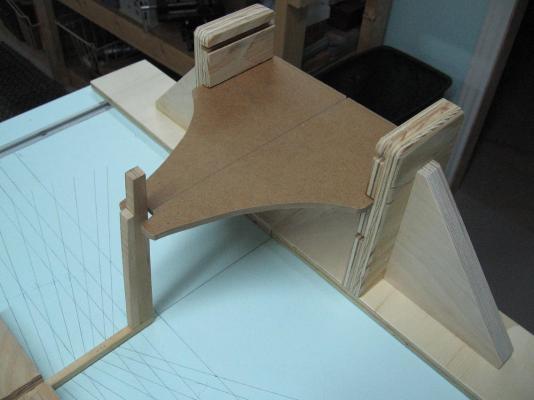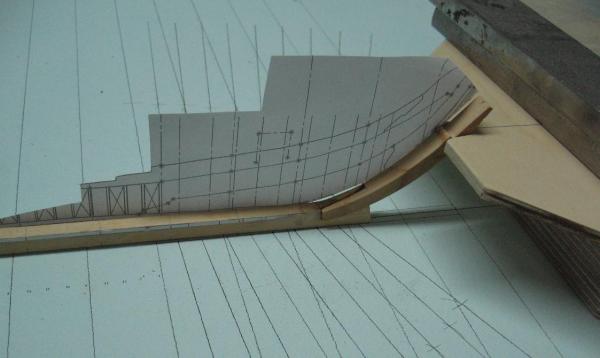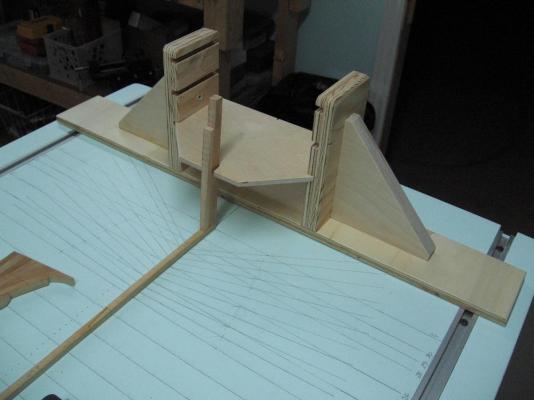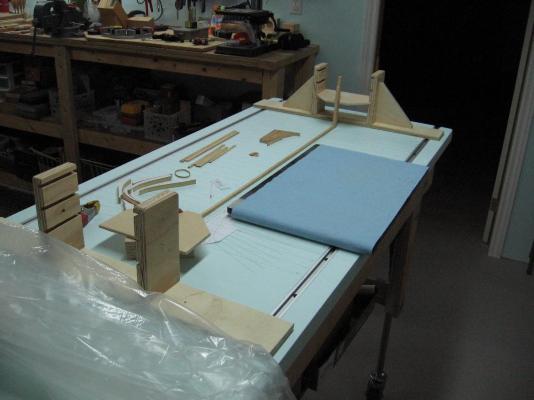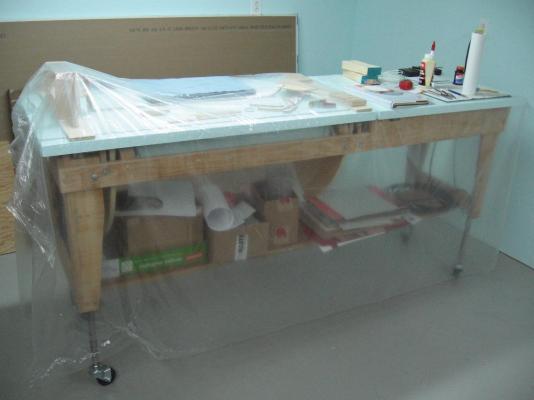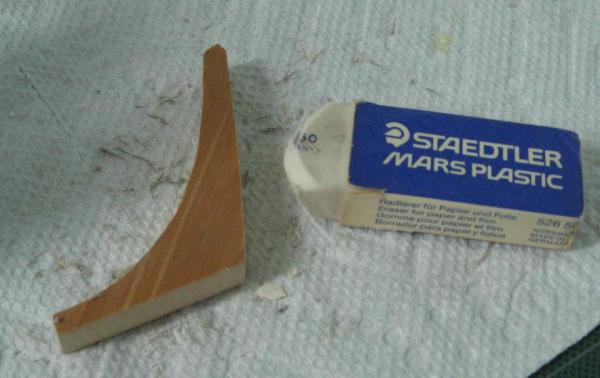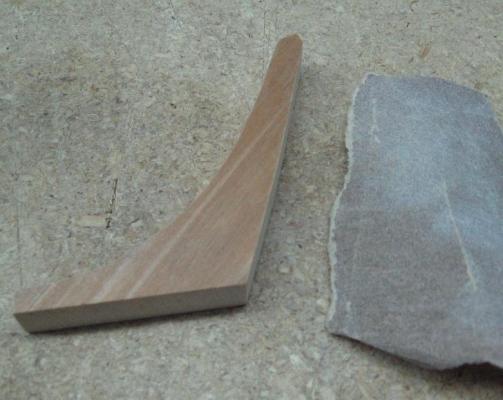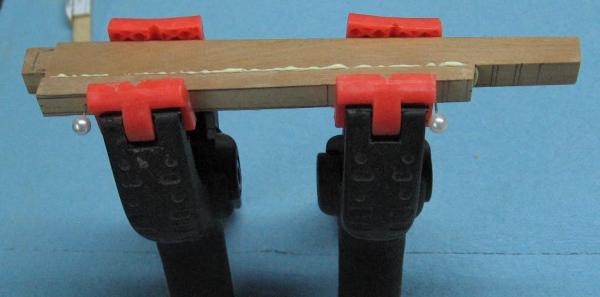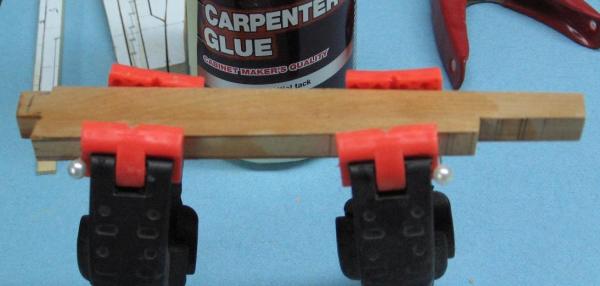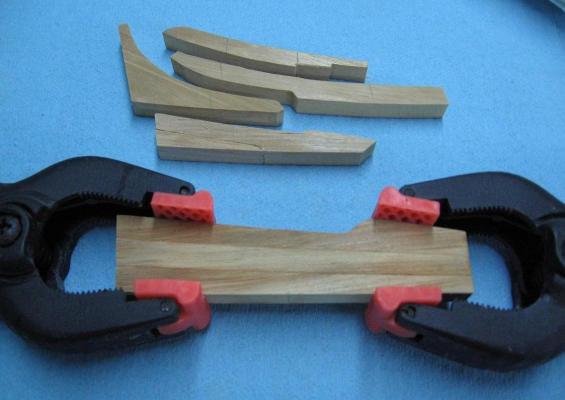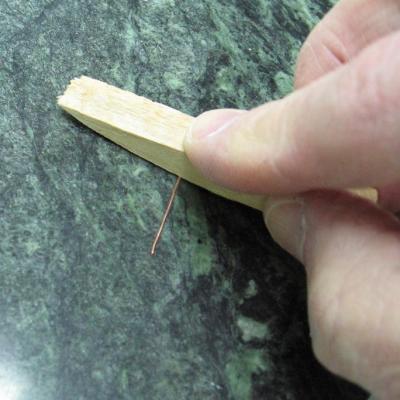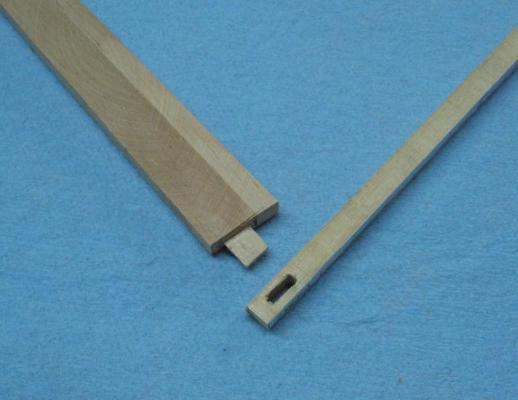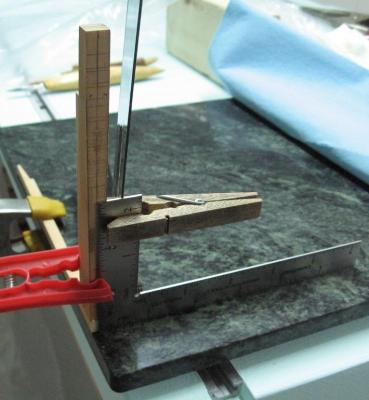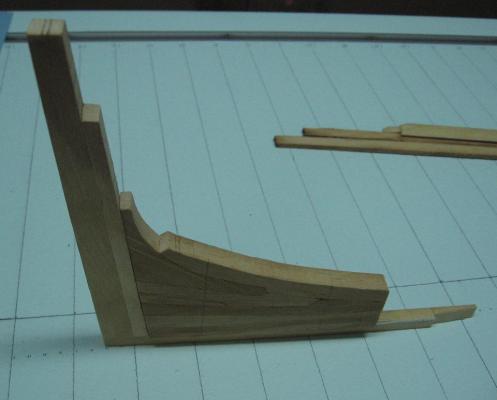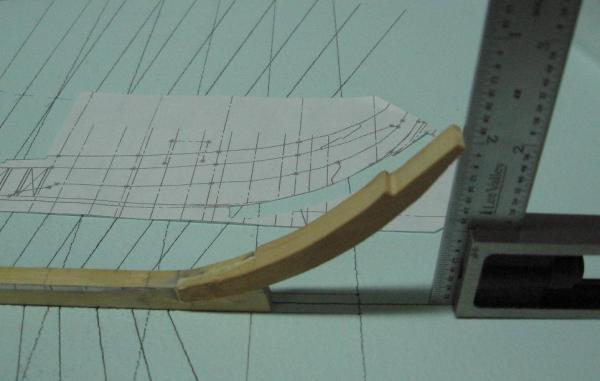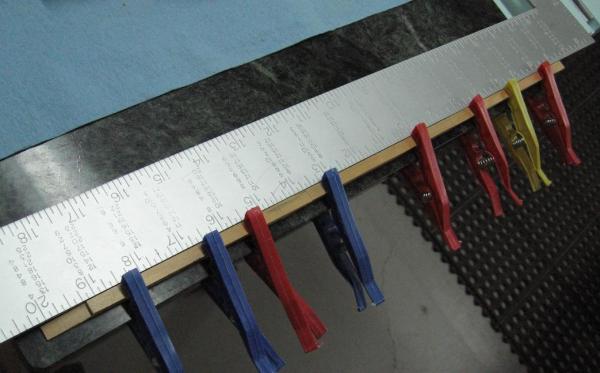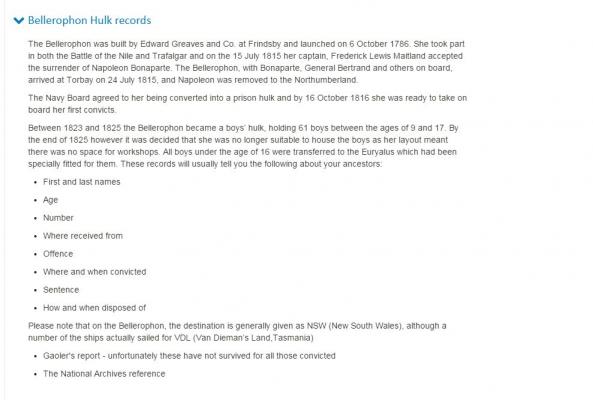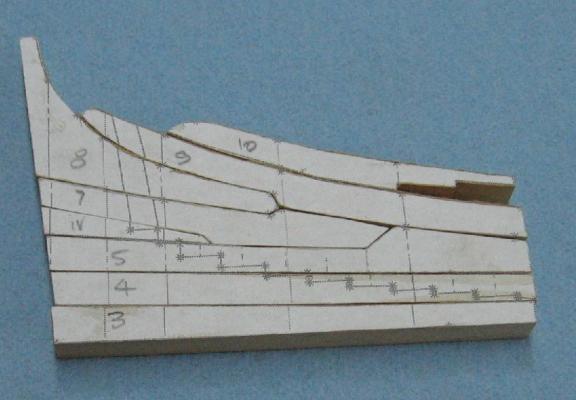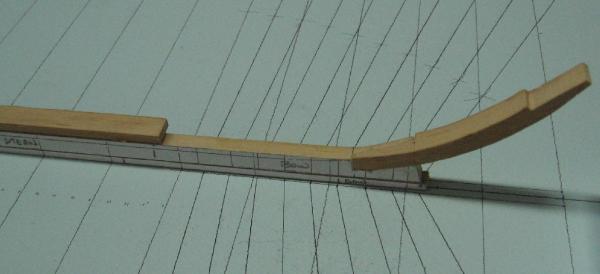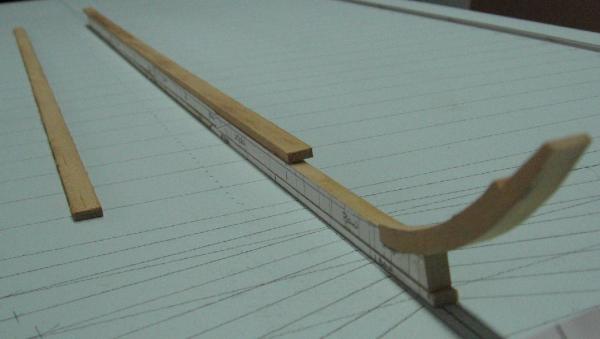-
Posts
2,859 -
Joined
-
Last visited
Content Type
Profiles
Forums
Gallery
Events
Everything posted by AON
-
Slow progress drawing up the frame templates. The more I look at the small amount woodwork I've done to date the more I want to start over. I am not completely happy with my joinery and feel with some practice I can do a much better job. I will complete what I've started and then decide if this would have been all for practise, at which point I may then put it aside and do it all over again. I will need to do more joinery practice work on pieces out of the drop pile. If I keep going down this path I may need to grab another bundle of lath out of my son's wood pile!! I also signed up for the Admiralty Models Spring Workshop being held in beautiful Niagara on the Lake on May the 1st ans 2nd This one is on Frieze Painting and Flag Making I know I am years from needing to know this stuff, but when opportunity knocks....
-

timing belts and pulleys
AON replied to Kurt Johnson's topic in Modeling tools and Workshop Equipment
www.gates.com offers a design booklet for their cogged or toothed pulleys and belts that should answer your questions and help with your selection but wq3296 is correct... it will not slip so the safety aspect of the slippage is lost. -
I see with your last photo you have started a new scratch build kit Congratulations! it is difficult to comment on the former when looking at the latter This next kit will take a lifetime but like most you'll get so much more from it then you give.
-
Looks good to me too. I find that when I take my time and think things through, develop the plan, and eventually take a step... I should have wrote down the plan because I forgot a step. So now I write down the plan on my computer because it is easier to reorganize it there then with pencil, paper and eraser. And yet somehow I continue to skip a step! I blame it on age. As you are much younger it might work better for you!
- 23 replies
-
- sherbourne
- caldercraft
-
(and 1 more)
Tagged with:
-
I managed an hour to make another "goose necked" prototype support plate and re-attach the lower stem piece to the keel. In my dealings with Druxey yesterday he had mentioned how the usual fixed position support plate had managed to leave a sun bleached mark on one of his stem/stern post assemblies so another plus to the adjustable support plate height would be to reduce this bleaching effect caused by lighting. I would never had thought of that... I was just attempting to allow the area to open up if I needed to get my big clumsy hands in there!
-
Not much to show this weekend. I completed my transcription of the contract after having had help with the last few terms and phrases from my NRG mentor and then the final push yesterday for 2 hours with help from Druxey. (Thank you very much!) There are 79 typed pages in total of transcriptions, descriptions, explanations and detailed reference sources I can go back to at any time if I need to. Earlier today I took the lower stem piece connection to the keel apart (boxing joint) due to it being slightly skewed. It is thicker than it needs to be to allow sanding to shape but as I will not know if the skewing was too much until the sanding is done, and to do the sanding I need to glue the other stem assembly pieces to it... I felt it was prudent not to tempt fate. Thanks to the forum I found many references on how to dissolve/soften the glue and after having wetted the joint with Isopropyl rubbing alcohol (70% USP), wrapping with plastic wrap and waiting 24 hours it came apart without any effort at all. I had plans to complete my supports and shape the deadwood assembly... but stuff tends to happen and derail the best of plans. Happily this is not a race.
-
His 'about turn' is not very military like. Must be a volunteer.... like me! but seriously... very life like!!
-
Started making the post supports and have one end assembled less the T-handle clamps to lock it in place on the rails. I made the horizontal support plate adjustable on 3 tiers so if it is in the way I can lower or raise it.... or remove it. Presently the plate is meant to be a prototype (1/4" Plywood) My intention is to make the final version out of 1/4" Plexiglas material of which I have a sheet outside the room with the wood stash. I am not 100% happy with the plate. The bracket can be moved back another 3" on the table top and then the neck on the plate can reach out 3" further to open it up a bit. In the end, as always, the sheet of plastic is pulled over it all to keep the dust at bay. I also glued up some paper onto a piece of scrap for the test mentioned in yesterdays post. It will sit for a few days (as did the real pieces) before I peel the paper off, erase the glue and test wood finish on the glued versus bare wood surface.
-
Good morning Druxey, That's no everyday regular eraser... that's left over from my pencil draughting days !!! Rubber cement was used a lot before cut and paste commands on a computer and these erases did the trick... but we had no idea there was a special rubber cement eraser. I'll have to look into it. My darling wife brought up a good point last night... I should do a quick test on scrap to see if after erasing the rubber cement it has not leached into the wood so as to affect any finishing. Regarding the tissue paper... I read somewhere that it should be soaked first, Of course I cannot find that now. I admit I went downstairs and took a look at the assembly and thought about taking it apart after having read your e-mail. I haven't got the heart to attempt to do that. So as much as I unbelievably hate the phrase ... "it is what it is" (I have to go kick myself now ... damn I hate it) I only used the gorilla glue on the copper wire. Everything else is and will be yellow carpenters glue. I believe the 22 ga copper wire may be a waste of time in most places. Roughing up the monofilament line grabs and seems to carry the glue into the hole. This seems better to me. Presently looking at cutting and placing the rising wood and false keel I will use the copper wire for the staples securing the sides of the false keel I also have to make my jigs to hold the stem and stern post secure and perpendicular to the table. Alan
-
Started gluing parts together today The remnants of the rubber cement were removed by simply erasing the surface…. … and there were paper thin feathered edges from my sander that need to removed by lightly sanded by hand. First piece glued was the Stern Post to the Inner Post. Here are the before and after cleaning pics. I did drill and pin them to assist in alignment. You can see the ball head of the straight pins. The pencil lines are to help me with shaping later on. The stern deadwood was assembled piece by piece, clamping up and letting them set before attaching the next piece. This is where my marble pastry rolling slab came in handy. I set the assembly down onto the slab to assure the surfaces were flush when assembled. I did insert two pieces of copper wire into the stern post assembly to assist in keeping it together. Not sure it was necessary nor that the Gorilla Glue got in deep enough. I tried working the wire in and out but I did not see any glue at the far end. I had to strip the insulation of the telephone wire and then roll the copper wire straight. 22 gauge wire is quite flimsy stuff and easily bent. I cut the mortise and tennon joint in the Stern Post and Keel then assembled them. Clamping up the tapered stern post to the proper angle was a bit of a challenge. I ended up using a few different tools and good old fashion clothes pins. The Stem to Keel boxing joint was eventually glued up and set properly. I did attempt to use the black tissue paper as you can see by the staining on the wood but had no success. I determined it was more trouble than it was worth. I first soaked the paper in a 50/50 water glue mix and after numerous tries place it on the joint surfaces. Quite a few pieces tore apart in my fingers/tweezers. When I finally got around to attempting to put the keel and stem together the paper scrunched up on me. I took it apart and tried again with new pieces… then had more of the same trouble. After two more attempts I said to myself “screw it”. I also glued up the remaining sections of the keel; clamping them to the marble pastry slab and setting them against a straight edge…. sans tissue paper.
-
Good morning world. Itching to get started this morning but cannot make noise while the better half sleeps. Today I bite the bullet and begin drilling, pinning and gluing. My darling wife (the super sleuth) made a discover yesterday while working on her geology hobby tracing her and my family. Seems one of my Irish ancestors (James Flynn) was sentenced to serve his term on a prison hulk. While searching for him she stumbled on a 7 year old boy (William Flynn... no known relation) serving his sentence on HMS Bellerophon. In her end years the Bellerophon (later renamed Captivity) was used to hold young boys as prisoners! I always imagined these were military prisons, holding AWOL and mutineer sailors and such... was I wrong or what. The attached reads 9 to 17 year old boys but William was 7 and he was recorded as having been there once before!!!
-
Pssst... 45 is no where near old!
-
Good evening Mark. I read your comment earlier today and of course it made a huge impression on me. But now after some hours it seems like a challenge .... if only I had the talent! On another more achievable note... After considerable calling around I found a local source of 22 gauge solid copper wire (if I should chose to use it). The only source is indoor telephone cable I bought 12 feet at 20 cents a foot (= $2.40) It is four strand so I have 48 feet in total. A co-worker caught me checking the diameter with my vernier and asked what it was for. After I told him he remarked that I should have talked to him as he has coils of it at home! Isn't that the way it goes.... I could have bought a double-double with that money. (I wonder how many are going to have to Google double-double?)
-

"Rowing Dinghy" - a kit build to learn basic skills (moved by admin)
AON replied to jsolka's topic in Wood ship model kits
On a more serious note... I have an old marble pastry rolling flat to use to keep items flat for assembly but hadn't thought to use it (or glass) for sanding I have seen here on the forums (and so have used) nail file boards for sanding. That was handy and timely. It is tough learning when to say "when" (to know when to stop sanding). I've read where some use old fashion carbon paper slipped between pieces during dry fitting to mark / highlight the bumps to sand. I have also found it is easier to stop early and dry fit pieces to check many times than it is to stop late and have a bad fit ... I have a good scrap collection started to prove it. -

"Rowing Dinghy" - a kit build to learn basic skills (moved by admin)
AON replied to jsolka's topic in Wood ship model kits
good start ... but now I am hungry! -
Thank you Druxey. The long 's' and I are very good friendf prefently.. When I sat down to start I made a decision on exactly how I would approach it and I was committed to correct each long 's' and so I have. Then there was 'rabbit' and 'fastned' and.... the list goes on. I am very happy I have done this otherwise the darn contract would still be a myftery. I found reading it was like reading The Last of the Mohicians... the longer I stuck with it the easier the language prose became. I will admit to being a bit hesitant to start gluing and pining parts.... but I can see myself starting very soon... visualizing. My son claims he found some thicker lath in his pile late yesterday so I will be remaking the parts I must in the knee of the head and stem pieces as I start gluing and pining them. Thank you all for following... it's going to get scary really soon. Alan
-
Today I cut and dry fitted the last two pieces of the stern deadwood and keelson (template items marked 9 and 10) I also cut two strips 8" thick (1/8" to scale) x 22" wide (0.3438" to scale) for the rising wood that sits on top of the keel. Actually my pieces are ever so slightly larger (approximately 0.01" in both thickness and width). They would need to be cut to short lengths with scarph joints. I will not do that until I am ready to glue and pin it together on the keel assembly. Today, I also remade my boxing joint piece. This would be the third time. I had trimmed too much on the upper scarph joint. I have also been busy doing something very constructive over the last two weeks. Never having been able to sit down and read nor understand the complete build contract I decided to transcribe it (type it out)... only the first 21 pages as the last few pages are payment schedule details that will not affect my build. I've added some spelling corrections for today in brackets next to the questionable words; below each paragraph I've added explanations and descriptions for unknown words or phrases and I've added reference books, pages, image information so when I am at the point in the near/far future I can find it again quickly. Presently I am transcribing page 20 of 21... this would be typed page 57 for me. I've attached a PDF of the first 3 typed pages to give a better sense of what I mean. Making Sense of the Contract.pdf
-
Joshua I typed in - Free Google E-Book and the following website popped up https://www.google.com/cse/home?cx=000661023013169144559:a1-kkiboeco I typed in a book name I wanted (example: Anatomy of the ship Bellona) and there it was about third from the top listed as free and downloadable Some books are not PDF but there are You Tube videos explaining how to convert the file to PDF Some books are not free but they offer viewing of pages... when I stumble on some pages that are useful I take take a screen snapshot and save it for reference. If the whole book seems really good and no free e-book version is available I will try inter-library loan (books are loaned to individuals from libraries across the nation (not sure if you have this available with you library system). It may take a few weeks but then I can view the whole book and decide if I it is indeed that good and I should purchase a copy. Presently the best real purchased books in my library are the 4 volume set of The Fully Framed Model. My copies are quite new but to look at them today you might think I've had them awhile. Alan
About us
Modelshipworld - Advancing Ship Modeling through Research
SSL Secured
Your security is important for us so this Website is SSL-Secured
NRG Mailing Address
Nautical Research Guild
237 South Lincoln Street
Westmont IL, 60559-1917
Model Ship World ® and the MSW logo are Registered Trademarks, and belong to the Nautical Research Guild (United States Patent and Trademark Office: No. 6,929,264 & No. 6,929,274, registered Dec. 20, 2022)
Helpful Links
About the NRG
If you enjoy building ship models that are historically accurate as well as beautiful, then The Nautical Research Guild (NRG) is just right for you.
The Guild is a non-profit educational organization whose mission is to “Advance Ship Modeling Through Research”. We provide support to our members in their efforts to raise the quality of their model ships.
The Nautical Research Guild has published our world-renowned quarterly magazine, The Nautical Research Journal, since 1955. The pages of the Journal are full of articles by accomplished ship modelers who show you how they create those exquisite details on their models, and by maritime historians who show you the correct details to build. The Journal is available in both print and digital editions. Go to the NRG web site (www.thenrg.org) to download a complimentary digital copy of the Journal. The NRG also publishes plan sets, books and compilations of back issues of the Journal and the former Ships in Scale and Model Ship Builder magazines.



